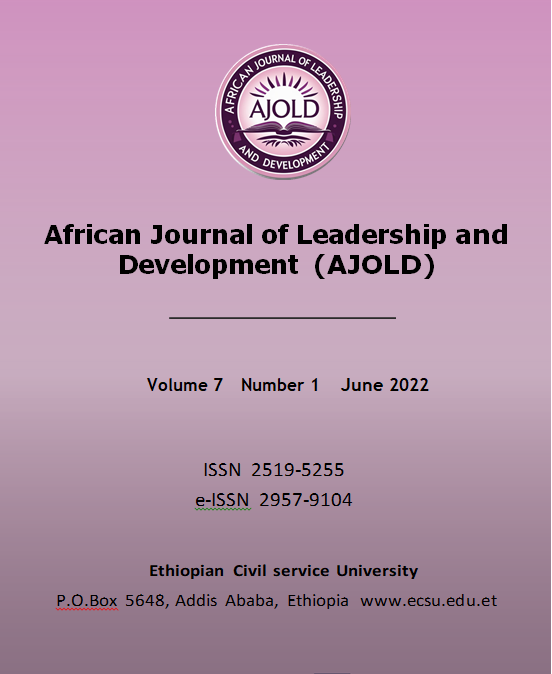Competency Based Human Resource Management Practices in the Public Enterprises of Ethiopia: The Case of the Commercial Bank of Ethiopia
DOI:
https://doi.org/10.63990/2022ajoldvol7iss1pp28-49Keywords:
CB-HRM, Competency Framework, Oracle Banking SystemAbstract
In accordance with the FDRE Government Employees Proclamation No. 1067/2010 and 1097/2011, the Federal Civil Service Commission has been mandated with formulating and implementing a competency framework across all civil service organizations in the nation. To support this effort, the Federal Civil Service Commission (FCSC) has identified 12 local organizations that have reported formulating and implementing a Competence Framework. However, only two public enterprises (CBE and EAL) have been found to be applying CB-HRM. Therefore, the main objective of this study was to examine and draw on local experience of CB-HRM practices from CBE and extract lessons that could be transferred and benefit the country-wide effort of developing and implementing CB-HRM in Ethiopia. To achieve this purpose, a mixed research approach was employed, and primary data were collected from 307 CBE officers and 47 leader respondents who were selected using a random sampling technique. The samples were taken using Solvin’s formula. Data were also collected through questioners, FGD, and semi-structured interview methods, and the required analyses were made accordingly. The study found that the key stepping stone to begin the CB-HRM system in CBE was the bank's elastic vision and the recognition of an incompetent HRM system to carry out the vision within the stipulated time frame. As a result, CBE developed and implemented a CB-HRM system in 2011 with the help of an international consultancy firm from Germany. The system was installed in three phases: preparation, development, and implementation, and it took about ten years to finalize the system in CBE. The system is reviewed every two and a half years, and the third round of revision has been concluded. The external consulting firm's role ceased after the second phase, and the system is currently fully owned by CBE's in-house force. Almost all actors of the bank participated in the process of developing and implementing CB-HRM. CBE has developed three types of competency frameworks: core, leadership, and technical, and the system was integrated with the 'Oracle banking system.' Different communication strategies were employed at three different stages of CB-HRM. However, there was a problem in maintaining balance among the three stages, and communication was predominantly held at the implementation stage. The study identified the key success factors and challenges faced during CB-HRM introduction in CBE and its implications for the civil service sector, along with recommendations for the bank.
Downloads
Published
How to Cite
Issue
Section
License
This work is licensed under a Creative Commons Attribution-NonCommercial 4.0 International License






